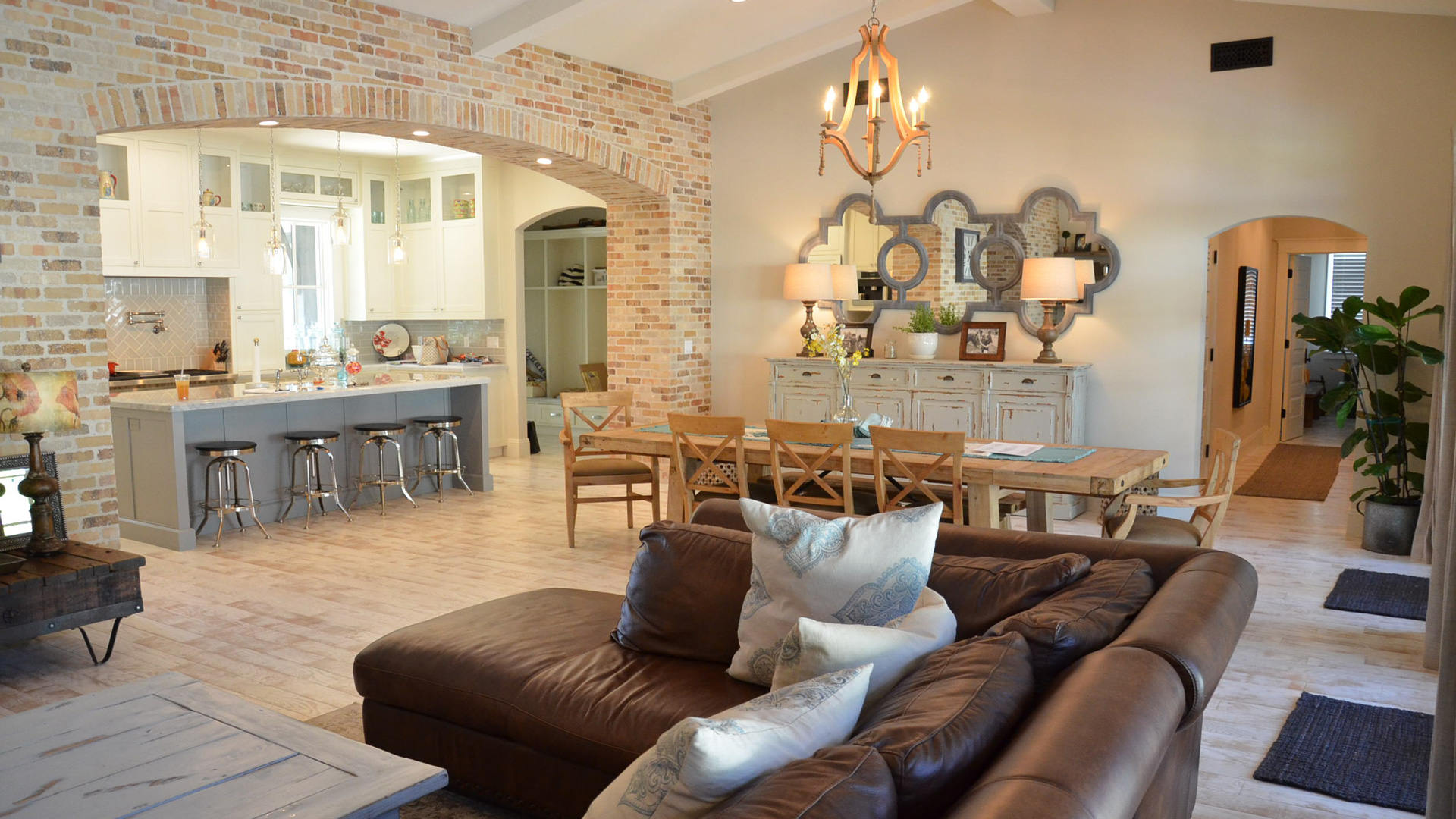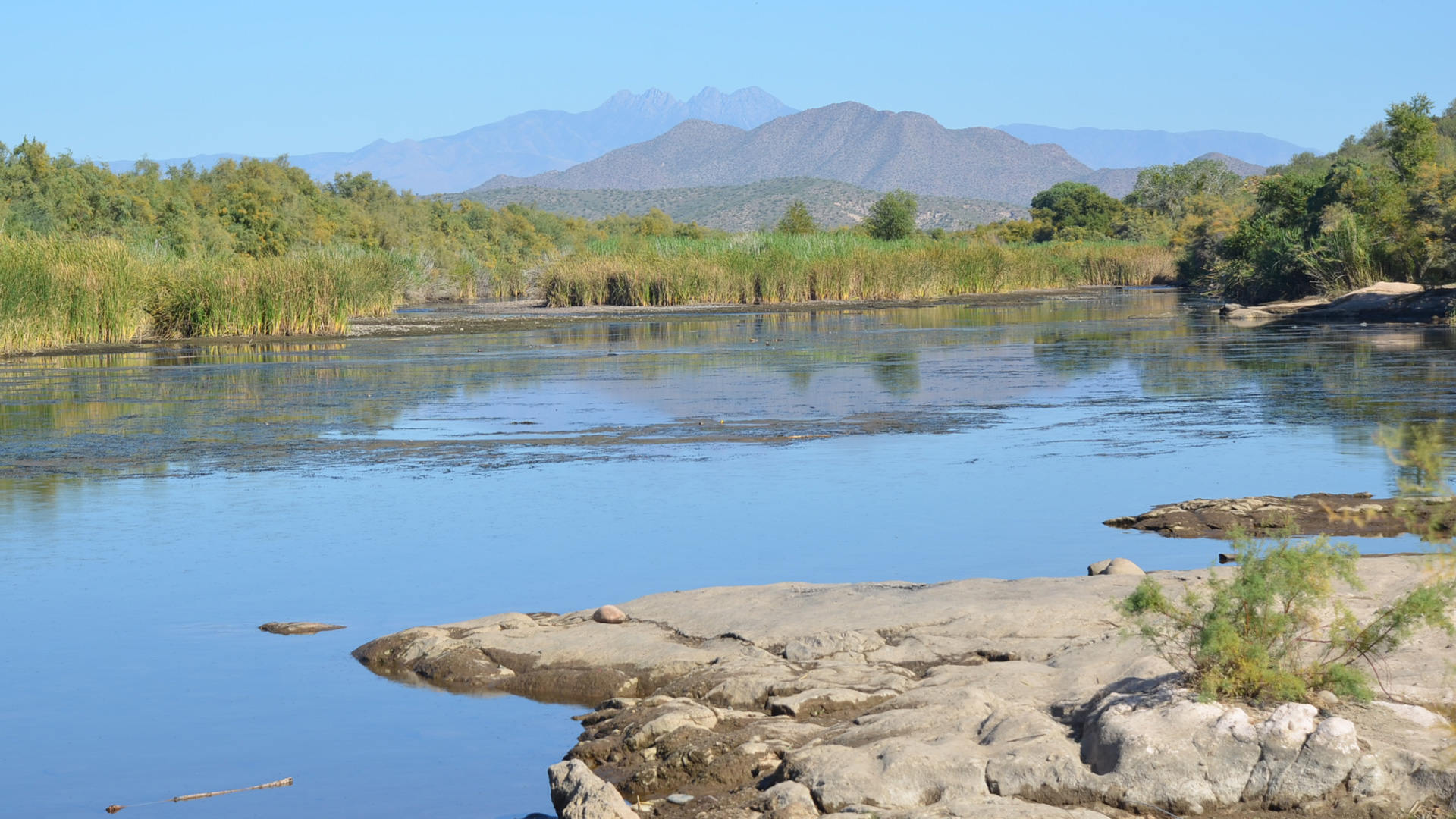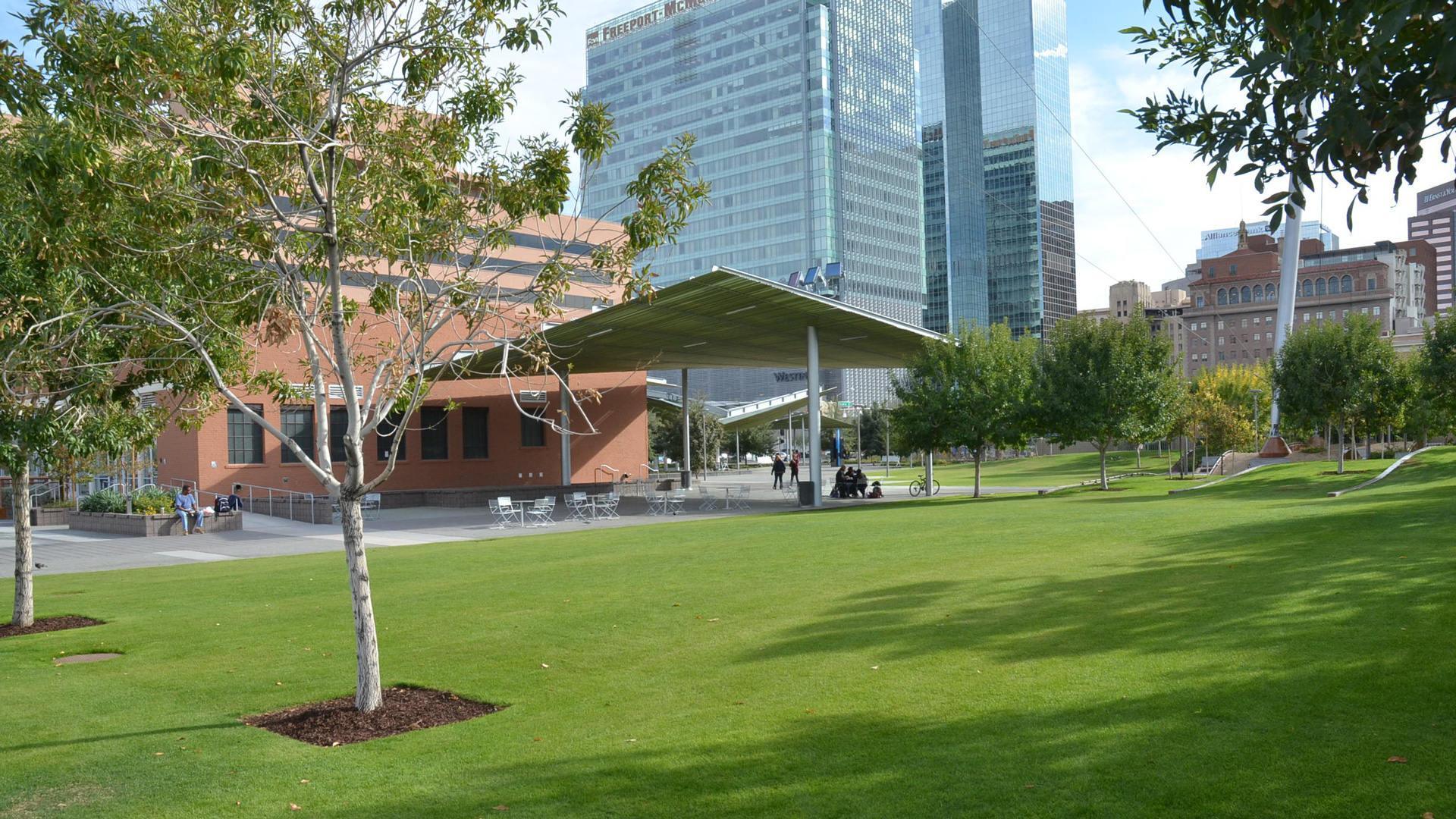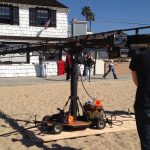Three Words: “Location, Location, Location”
We’ve all heard the timeless business and real estate wisdom that “location” is one of the most critical factors for financial success. When shooting a photo or video project outside of a studio, it would, indeed, be accurate to say that location scouting is definitely a crucial component for both creative and monetary success. Whether the creative calls for a beautiful scenic backdrop to showcase the client’s sporty outdoor clothing, or a warm suburban home to feature laundry detergent in action, the location creates the right mood and provides credibility in the viewers’ minds as they envision themselves using the client’s product or service.
In many cases, the client provides the location because the advertising message is directly related to their retail store, corporate office, or event. For these types of projects, it’s simply up to the creative team to find the best shots within these spaces to showcase the client’s message. Some examples of this might include “talking head” interviews at the client’s office or event, B-roll wide shots of client spaces and services, or shooting a commercial at the client’s retail store during off hours. That’s pretty much no-brainer stuff, so I’m going dive into the other location types that require significantly more time and money to organize and get right. Things can get tricky, and fast, when the creative specs call for locations that aren’t under the ownership or direct control of the client.
PRIVATE HOME LOCATIONS
One area where the process can become difficult is when the creative specs call for shooting in a private residential location. It’s an old marketing adage that 50% of all advertising is geared towards products that are used around the home, and I would say this is generally accurate based on my decades of experience. So it’s no surprise that an advertising client would want to depict people using and enjoying their product in a warm, friendly home environment (or, less frequently, in an ugly or scary home, depending on the creative). Although it may be tempting for a producer or a client to assume that the right home location will simply reveal itself and be available for the shoot at little or no cost through one’s personal or business network, I can assure you that this is rarely the case for a couple of reasons.

Advertising is largely aspirational
Most of us just don’t have homes that are large enough and outfitted with appropriate fixtures and furniture to accommodate a decent-sized film crew with models/actors, lighting gear, props, etc., and still leave enough room for the shooter to use the lens of his choice and move around with any degree of creative freedom. I live in the Phoenix metro area and the average family home here is about 1,200-2,500 sq ft. and costs about $250K-$500K (triple that figure for Los Angeles, New York City, etc.). Even though these are truly middle-class homes per the creative specs, they are generally not large enough to be shootable location homes for a production. Typically, the rooms and yards aren’t large enough, the ceilings are too low, and the parking in these neighborhoods is extremely limited by smaller lot sizes and usually unfriendly HOAs.
In contrast, most of the homes I show my clients are between 3,000-6,000 sq ft., have 10-ft. or higher ceilings in most rooms, have reasonably large yards, are not located in an HOA neighborhood, and are priced in the $1M-$2M range (in my Phoenix metro area market—much more in NYC, LA, etc.). Although they are certainly not free or cheap to shoot in, the client is getting a huge amount of production value well in excess of what it costs to shoot in a home like this for a day or two. A typical shoot in a nice large home will yield the creative team a variety of tasteful interior and exterior backgrounds complete with most of the large furniture and props that scream nice family home. Spending a few thousand dollars on a private home location can literally provide 10-20 times that cost in production value that makes the cut in the final edit.

Finding the right home is difficult
Finding a home the right size, style, and with an owner willing to live with a photo/film crew of 10-40 strangers in their personal space for a day or two typically involves the work of a location scout or location service. The traditional mode of operation is to hire a location scout for $500-$800/day to directly source private home locations geared toward the creative specs of the particular project. Depending on the creative specs and the budget (yes, you need to budget for locations in this case), a location scout/manager may work between 2-10 days, and is often required by a property owner to be there managing the location on the shoot days.
The other alternative (typically only available in larger markets) is to use a location service that already has an arsenal of many available location options they can present for a small “file pulling” fee. In either case, expect to pay a location fee of between $2,000-$6,000/day depending on a variety of factors including the size of your crew, time needed at the location home, amount of penetration into the owner’s personal space, and the particular market you’re shooting in. In addition to hiring a location scout/service and paying a homeowner, many cities and towns require a film permit if you’re shooting within their jurisdiction or need to park your production vehicles and crew cars on a neighborhood street.
PUBLIC SPACE LOCATIONS
For many other projects, the creative specs directly require an outdoor shot on a neighborhood street or one showcasing the product or service in public areas, such as downtown streets, urban parks, scenic landscapes, and other areas owned or controlled by state, federal, or local governments. This creates a variety of challenges because the numerous government entities operate quite differently in terms of their availability, permit requirements, lead times, cost, and overall “film friendliness,” which is instrumental in making your shoot a smooth success. Some government entities have a very film-friendly official film office that will help you find and permit public spaces while other government entities make their spaces completely off limits for any type of commercial shooting for a number of reasons.

For example, vast swaths of designated wilderness areas are off-limits per state and federal laws to any kind of commercial use (yes—that includes us in the production business since we have a client paying us for our services). These lands are typically open to the public for a variety of recreational uses, but closed to those of us working on a commercial project of any kind. Many other public areas are technically available for shooting with a permit, but the lead times are so long, 30-60 days or more in some cases, that it doesn’t make them a realistic option given the short lead times we usually get between the time a project is awarded and when we need to shoot.
COMMERCIAL REAL ESTATE LOCATIONS
Commercial real estate, like schools, office buildings, warehouses, shopping malls, etc., can be among the most difficult and expensive to secure. It can be quite a bit of work to turn the creative vision of images shot in a school or office building into reality. The vast majority of these spaces are owned by larger institutions and business entities. The reason for the existence of a commercial space rarely has anything to do with our industry and it can often be an uphill battle to convince a commercial property owner that our shoot can peacefully coexist with the students, businesses, shoppers, and other real users of the property.

In my experience, a commercial space can be the most difficult to find and secure because there are a significant amount of people and entities who must approve things for a shoot to happen. Couple this with the typically high values of such properties, and you can understand why it’s not reasonable to assume you can shoot at a shopping mall for a day by making a quick phone call and offering them $500.
WHY YOU SHOULD HIRE A LOCAL LOCATION PROFESSIONAL
Although securing locations the right way might sound difficult, there’s significant danger in the popular do-it-yourself location finding method. To illustrate the importance of working with an experienced local location/production person, I’m going to explain “Google scouting”, which is a pretty self-explanatory term. In the modern era of the internet, there is a tendency for clients, agency creatives, photographers, directors, and producers to use the internet to generate creative ideas and perhaps have initial conversations about the possible location directions their project might take. And that’s fine—the internet certainly has made much more information instantly available, and that’s a generally a good thing. The downside is that many creatives think finding and securing locations is as simple as searching for photos online, having a pre-pro meeting to forge an agreement on the approved locations, and making a phone call to get a permit or make a deal. If you haven’t already made this mistake and learned the hard way from personal experience, please read on!
The most important factors involved in location selection are its appearance, availability, accessibility, and cost, both in time and money. These factors are in no particular order—a beautiful location in a designated wilderness area will never be anything but an awesome non-commercial image on the internet. It exists, but is always unavailable (legally, at least!), and an amazing location that can be permitted, but requires a 2 mile hike is probably not a good option for a photo team of New York fashionistas looking to shoot 15 outfits in a day. It meets three out of the four criteria, but isn’t really accessible for that kind of project. The fact is that all four essential factors (or at least 3.5) must be satisfied for a geographic location to be a shooting location for any given project. Here are a few real-life examples of what not to do, and then how I avoid these pitfalls and keep my clients happy and legally protected.

On more than one occasion, I’ve had “Google scouting” clients email me their creative deck and a shoot schedule that goes something like this:
- Travel/Prep Day
- Tech Scout Day
- Shoot Day 1: Shoot Downtown Phoenix
- Shoot Day 2: Shoot Sedona Red Rocks
- Shoot Day 3: Shoot Lake Powell
- Shoot Day 4: Shoot Prescott Pine Forest
- Travel/Wrap Day
Even if you don’t live in Arizona, anyone of working age should be able to read the mileage scale on a map and see that these locations are many hours apart and can’t possibly be scouted in one day or shot four days in a row! In this case, the locations cost too much time and money (and time IS money) in terms of travel days not being budgeted for the crew. My solution in this case was to substitute a local city park with some red rock for the Sedona location and a lake outside of Phoenix for Lake Powell. Were my local suggestions as majestic as the client’s Google scouting first choice options? Not quite, but the project was a small fashion shoot and the photographer shot with a long lens and a blown-out background anyway. The additional cost of travel time and days really wouldn’t have added enough production value in this case.
I’ve had other clients show me photos of the amazing slot canyons of northern Arizona with beautiful shafts of sunlight streaming into them and tell me that’s where the client wants to shoot. They have plenty of time and money to get there, they’re willing to hike a half-mile to get in, and they have the money to pay the Navajos who own the land. Sounds good, right? Well, the Google scouting photo the client likes was taken in July between 11am-noon when the sun is in the right position directly overhead to stream into the canyon and create that beautiful look. Unfortunately, they want to shoot in February when the sun is so low in the sky that it will never hit the inside of the canyon at all. In this case, the location didn’t work because its appearance wouldn’t be like the photo at the time of year the client wanted to shoot. My solution was to simply show them other scenic canyons that had plenty of sunlight and ultimately met their creative needs quite well.

I’m pretty good at putting out fires like the examples above, but things go much more smoothly for the client if they consult with me at the beginning of the location selection process. Although Google is technically all-knowing in the sense that it probably contains all the knowledge on Earth if you know how to find it, an actual human with 27 years of production experience can cut to the chase much faster than a computer! My typical approach for most clients is to have them send me their creative specs and budget so I can recommend a variety of locations that I think will meet all four of the essential location factors right from the start. I do charge a one-day rate ($750) for this service, but the client is getting between 5-20 days of location scouting value based on 27 years of experience successfully navigating these locations. I can also usually answer any questions they may have immediately and keep the project moving forward quickly, which is critical on the limited timelines we usually have.
The Other Three L’s: Legal, Legal, Legal
Although the creative side rarely thinks about it, the production side knows the necessity of everything done in the client’s name being above-board and legal. Yes–I know a lot of the “free spirits” in our creative field like to brag about their liberating moments of inspired genius during their “run and gun” shooting experiences, but that’s a sign of laziness, immaturity, budgetary incompetence, or greed that a real client should not tolerate when paying the proper fee for a real production. Although a very small crew can often get away with some guerrilla filmmaking, there are two main risks involved in not having permission to shoot on someone else’s property. The first risk is quite practical and should be obvious to anyone, and that’s the risk of being ejected from the property before getting the shot. If this happens, you’ve got an entire crew (small though it may be), a client standing around without a viable option to finish the shoot, and likely a continuity of a problem if they try to finish the shot somewhere else where they would obviously be trespassing as well.
The second risk is legal, and I will offer a quick legal disclaimer here—I’m not a lawyer, and I don’t even play one on TV. That said, I’m going to do my best to at least put the concept of legal and financial risk on your monitor. There is always a certain amount of legal risk in any business undertaking, and it’s a good producer’s job to limit that risk as much as possible. Hiring a location professional is often a vital part of that process because he ensures that all the permits, location agreements, signatures, insurance certificates, and payment is in place before anybody says action.
While most clients and production companies have insurance for their shoots, what many people don’t realize is that if you’re shooting somewhere without permission or doing something that violates the terms of the location agreement or permit, the door is wide open for a number of people to be sued and for an insurance company to deny a claim. For example, if property is damaged or someone is injured on a legitimate location where all the legal work has been done, the insurance company will most likely pay the claim and everything will return to normal (with the possible exception of increased insurance rates, but hey—I’m just a location guy, I can only control so much!).

If the same damage or injury occurs on a location that isn’t properly permitted, the insurance company might pay the claim and then sue everyone in sight, including their policyholder, for negligence since the policyholder’s employees or subcontractors were trespassing or violating the terms of their permit or location agreement. That places the client, the producer, the shooter, the location scout/manager, and potentially others on the crew in legal and financial peril. As with anything else in life, you get what you pay for.
About Our Guest Author
Eric Hofstetter is the owner of East-West Productions, Inc., a video production and scouting company based in Phoenix, Arizona. Eric has 27 years of industry experience as a producer, location scout/manager, and creative cat wrangler. His motto is, “A production needs a location a lot more than a location needs a production!” East-West Productions has collaborated with MarzMotion on shoots and we’d recommend Eric to anyone.
Eric Hofstetter
East-West Productions, Inc.
eastwestproductions.com
[email protected]
480-330-0940


